Submitted by chandra on Tue, 2015-05-19 15:11
There have been so many excellent images and messages being tied to the hashtag #girlswithtoys on Twitter over the past several days. We would love to be able to take some selfies with some of the many female scientists, engineers, and other professionals who use and run the Chandra X-ray Observatory. (Of course, the Director of Chandra is Belinda Wilkes, the first woman to lead one of NASA’s Great Observatories) Unfortunately, Chandra is currently in its highly elliptical orbit that takes it a third of the way to the Moon, so the spacecraft is unavailable for a snapshot.
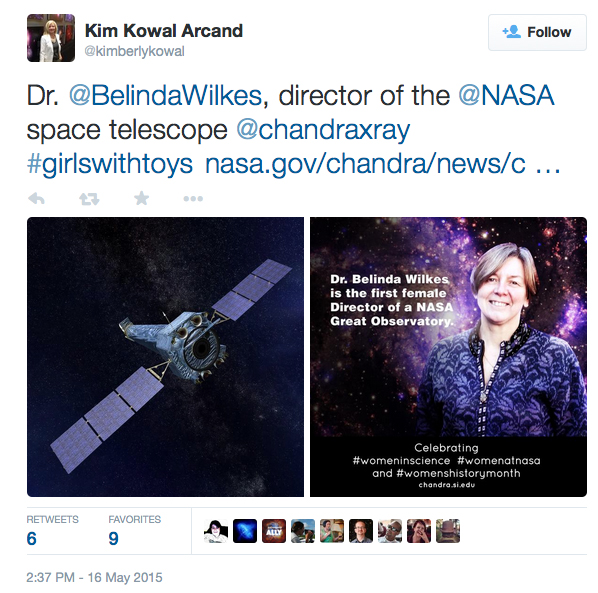
Submitted by chandra on Wed, 2015-05-13 12:52
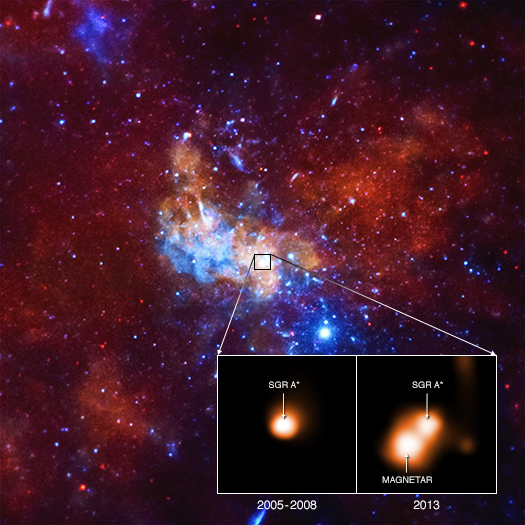
In 2013, astronomers announced they had discovered a magnetar exceptionally close to the supermassive black hole at the center of the Milky Way using a suite of space-borne telescopes including NASA's Chandra X-ray Observatory.
Magnetars are dense, collapsed stars (called "neutron stars") that possess enormously powerful magnetic fields. At a distance that could be as small as 0.3 light years (or about 2 trillion miles) from the 4-million-solar mass black hole in the center of our Milky Way galaxy, the magnetar is by far the closest neutron star to a supermassive black hole ever discovered and is likely in its gravitational grip.
Submitted by chandra on Thu, 2015-04-30 09:28
 Bin Luo
Bin LuoWe are very pleased to welcome Bin Luo as a guest blogger today. He led the study on supermassive black holes that is the subject of our latest press release. Bin obtained a PhD degree in Astronomy and Astrophysics from the Pennsylvania State University in 2010, working on the Chandra Deep Field surveys. He then worked as a postdoctoral fellow at the Harvard-Smithsonian Center for Astrophysics, and later back at the Pennsylvania State University. He will start a faculty position in September 2015 at the Nanjing University in China. Bin has mainly been working on X-ray studies of supermassive black holes in the centers of galaxies. He is now leading the data analysis of the 7-million-second (81 days) Chandra Deep Field-South survey, the deepest Chandra observation ever performed.
I have been studying the X-ray emission from accreting supermassive black holes since I was a graduate student. These monstrous black holes – quasars fueled by large amounts of gas and dust, consuming of the order of a couple solar masses per year – are known nearly universally to be strong X-ray emitters. Meanwhile, strong line emission – that is, light coming from a narrow range of wavelengths – is also a hallmark of quasar spectra in optical and ultraviolet bands. Therefore, I was quite puzzled when we discovered that a small group of quasars with remarkably weak ultraviolet line emission are often extremely X-ray weak. The pioneering work was led by Jianfeng Wu, Niel Brandt, and Pat Hall in 2011 and 2012, where the X-ray emission from 19 such quasars was examined. What makes things even more interesting is that for a subgroup of these quasars selected with refined ultraviolet properties, almost 100% are weak in X-ray light.
Submitted by chandra on Thu, 2015-04-30 09:27
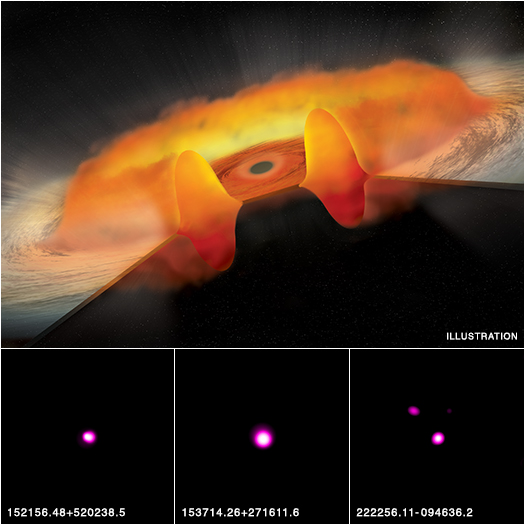
Astronomers have studied 51 quasars with NASA's Chandra X-ray Observatory and found they may represent an unusual population of black holes that consume excessive amounts of matter, as described in our latest press release. Quasars are objects that have supermassive black holes that also shine very brightly in different types of light. By examining the X-ray properties with Chandra, and combining them with data from ultraviolet and visible light observations, scientists are trying to determine exactly how these large black holes grow so quickly in the early Universe.
Submitted by chandra on Wed, 2015-04-29 11:03
Hundreds of explorers converged on the campus of Framingham State University in Massachusetts on Saturday, April 25, 2015 to take part in the first annual Science on State Street festival.
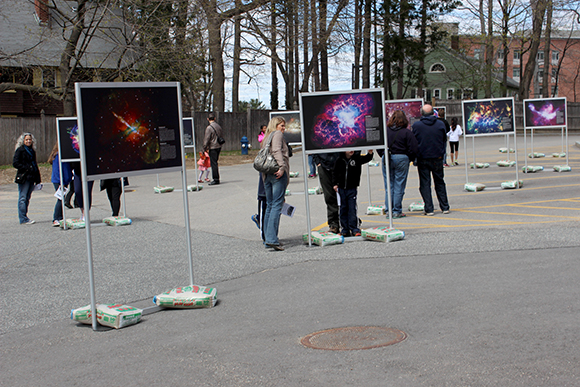
The family-focused event offered up a variety of interactive STEM-themed learning stations addressing aspects of chemistry, astronomy, biology, engineering, robotics and more, arranged outdoors across the University’s shady upper campus. We estimate between 500 and 600 visitors overall to the event.
Submitted by chandra on Thu, 2015-04-23 12:33
If you are at all interested in astronomy, chances are you’ve heard that the Hubble Space Telescope is celebrating its 25th anniversary this week. What some people may not know is that Hubble is one of four siblings, so to speak. Back in the 1980s, NASA commissioned the"Great Observatories," each designed and built to study different wavelengths of light.
The four Great Observatories, in order of their launches that took place between 1990 and 2003, are Hubble, the Compton Gamma Ray Observatory, the Chandra X-ray Observatory, and the Spitzer Space Telescope. You can learn a little more about each of these telescopes here: http://www.nasa.gov/audience/forstudents/postsecondary/features/F_NASA_G...
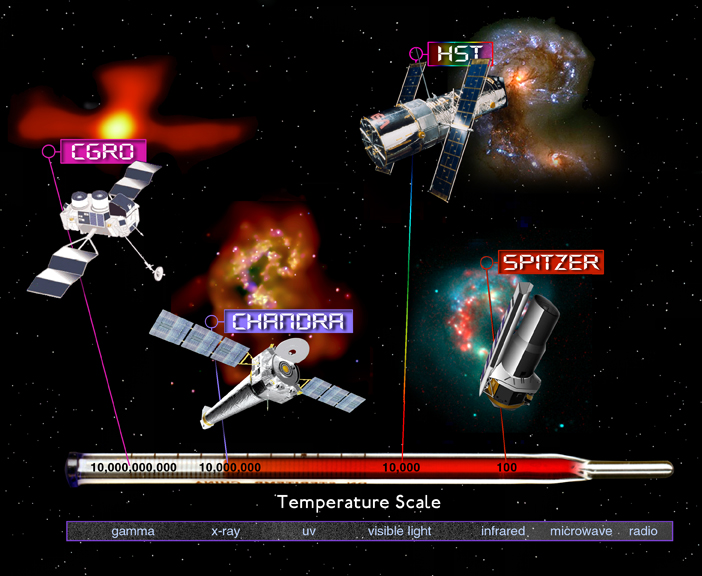
Submitted by chandra on Thu, 2015-04-16 10:38
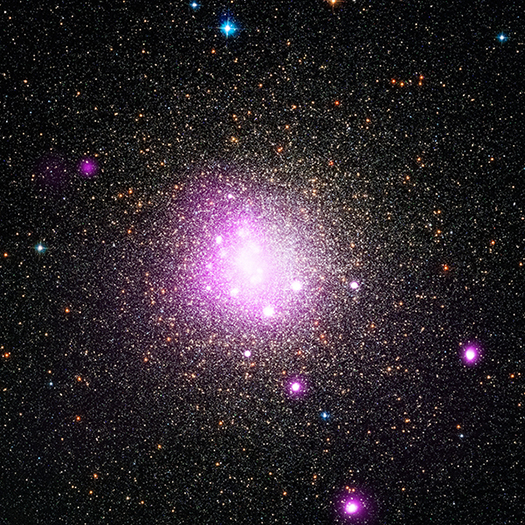
The destruction of a planet may sound like the stuff of science fiction, but a team of astronomers has found evidence that this may have happened in an ancient cluster of stars at the edge of the Milky Way galaxy.
Using several telescopes, including NASA's Chandra X-ray Observatory, researchers have found evidence that a white dwarf star - the dense core of a star like the Sun that has run out of nuclear fuel - may have ripped apart a planet as it came too close.
Submitted by chandra on Thu, 2015-03-26 12:46
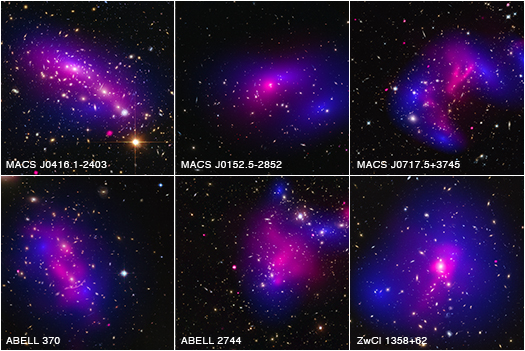
This panel of images represents a study of 72 colliding galaxy clusters conducted by a team of astronomers using NASA's Chandra X-ray Observatory and Hubble Space Telescope. The research sets new limits on how dark matter - the mysterious substance that makes up most of the matter in the Universe - interacts with itself, as reported in the press release. This information could help scientists narrow down the possibilities of what dark matter may be.
Submitted by chandra on Mon, 2015-03-23 10:52
Steve Hawley was the flight engineer on the STS-93 Columbia mission that carried Chandra into space in 1999. Before that he was on four previous shuttle flights, one in 1990 to deploy the Hubble Space Telescope, and one in 1997 to assist in making major upgrades and repairs to Hubble. His role in the deployment of two of the most productive telescopes ever has secured him an important place in the history of astronomy.
At a recent symposium celebrating 15 years of Chandra Science, Steve sat down over breakfast to talk about his illustrious career so far, and plans for the future.
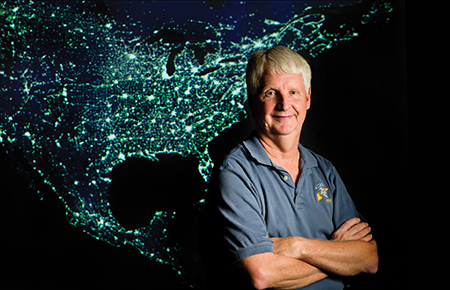 Steve Hawley
Steve HawleyWhen did you first think you wanted to be an astronaut?
SH: I wanted to be astronomer since I was very young. My grandfather taught physics at a small college in Kansas. He used to say, "In physics, you learn how to think." In astronomy you can learn how the universe works just by looking. And I was drawn to become an astronaut NASA, because NASA is a great organization because they try to do things that have never been done before.
Submitted by chandra on Mon, 2015-03-16 10:22
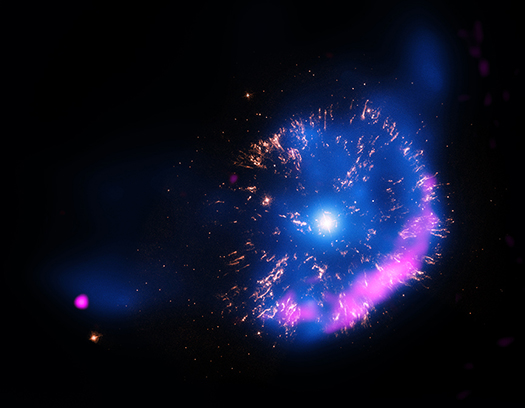
In Hollywood blockbusters, explosions are often among the stars of the show. In space, explosions of actual stars are a focus for scientists who hope to better understand their births, lives, and deaths and how they interact with their surroundings.
Using NASA's Chandra X-ray Observatory, astronomers have studied one particular explosion that may provide clues to the dynamics of other, much larger stellar eruptions.
Pages